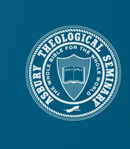Abstract
It is well-known that, by 1850, the Methodist Episcopal Church had become the largest Protestant denomination in the United States. Indeed, camp meetings, dedicated itinerant preachers, and a democratic structure that utilized laypeople helped fuel this explosive growth, especially as Methodism moved westward. Yet, upon closer examination, the church’s growth occurred more slowly, especially in the long-established urban areas on the east coast. This is illustrated by the New York Circuit’s struggle to respond not only to the new “city missions” movement beginning in 1816, but also to new church construction in the other, more prosperous, parts of Manhattan. Although the circuit had pioneered some remarkable ministries such as the Mission Society, Tract Society, and Sabbath Schools, its Board of Trustees lacked the means to rapidly construct these badly needed churches, especially in the new “mission territory” in the city’s northeast. Yet, despite the severe financial constraints, the New York Circuit was still able to add to the Methodist presence through the use of two low-cost, creative strategies while rejecting a third proposal that was deemed too controversial.
DOI
10.7252/Journal.01.2024S.06
Recommended Citation
Hardt, Philip
(2024)
"The New York Circuit and the City Missions Movement: Temporary Spaces, Quarterly Meeting Collaboration, and Rented Pews,"
The Asbury Journal:
Vol. 79:
No.
1, p. 109-129.
Available at:
https://place.asburyseminary.edu/asburyjournal/vol79/iss1/7
Included in
Biblical Studies Commons, Christian Denominations and Sects Commons, Missions and World Christianity Commons

